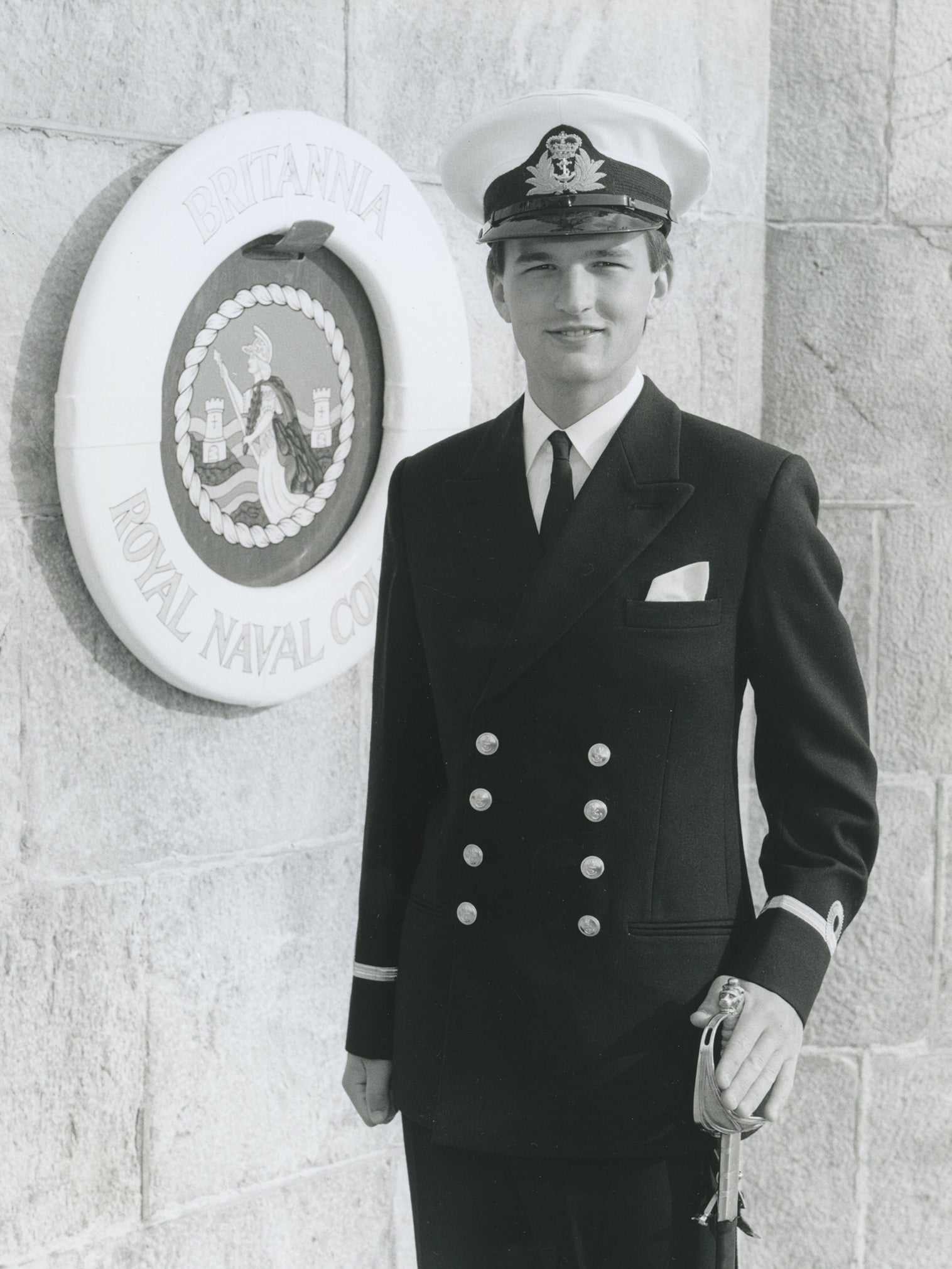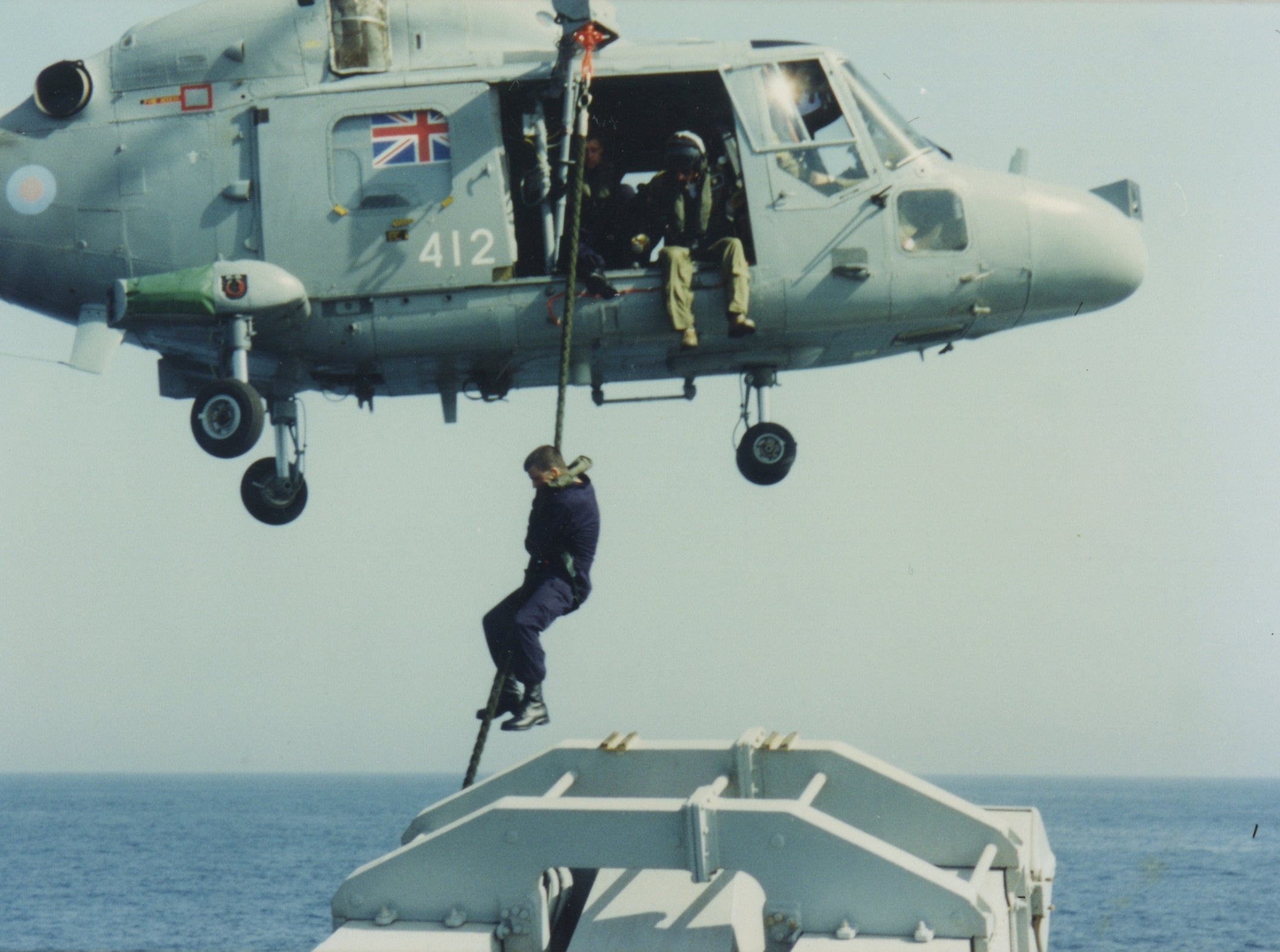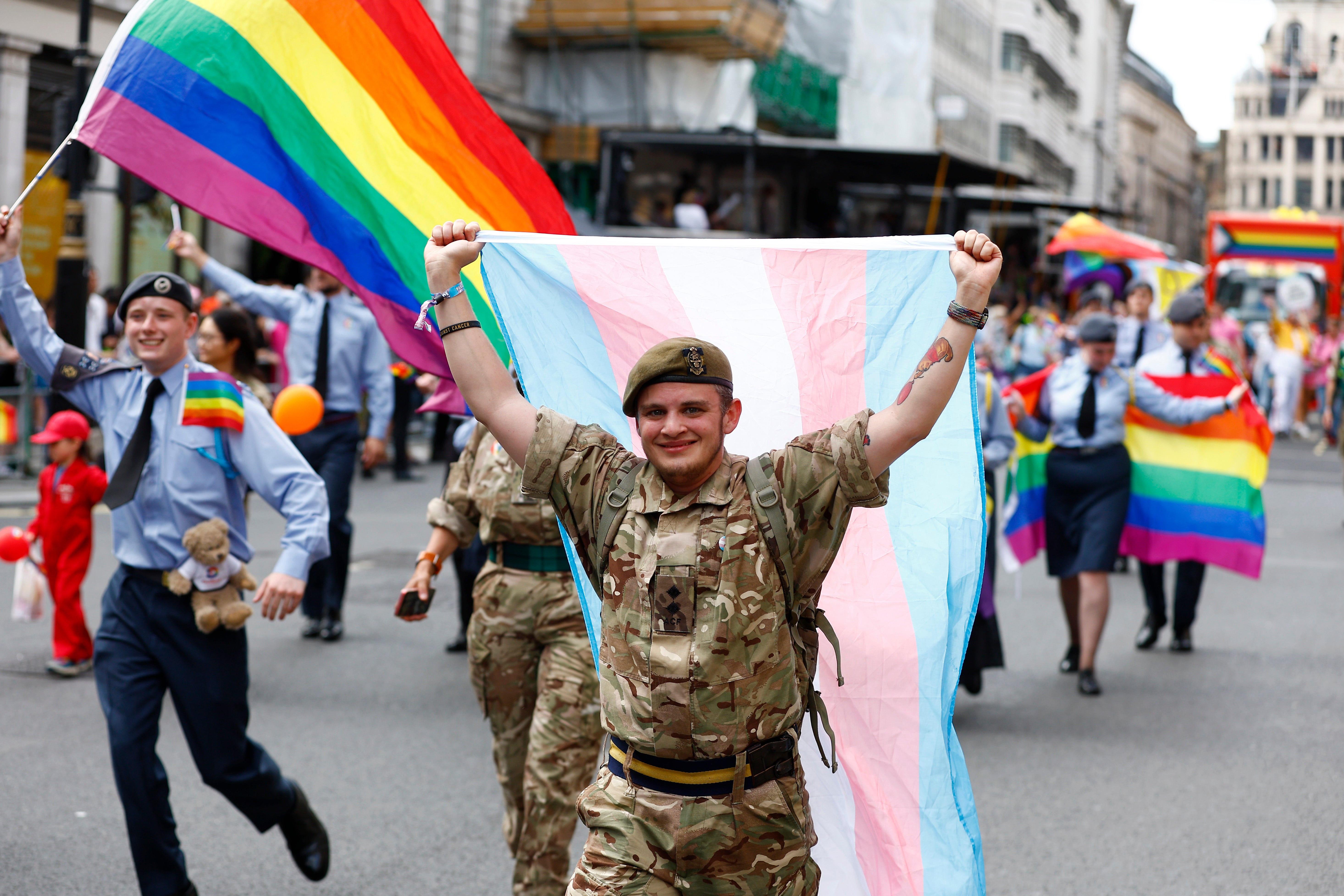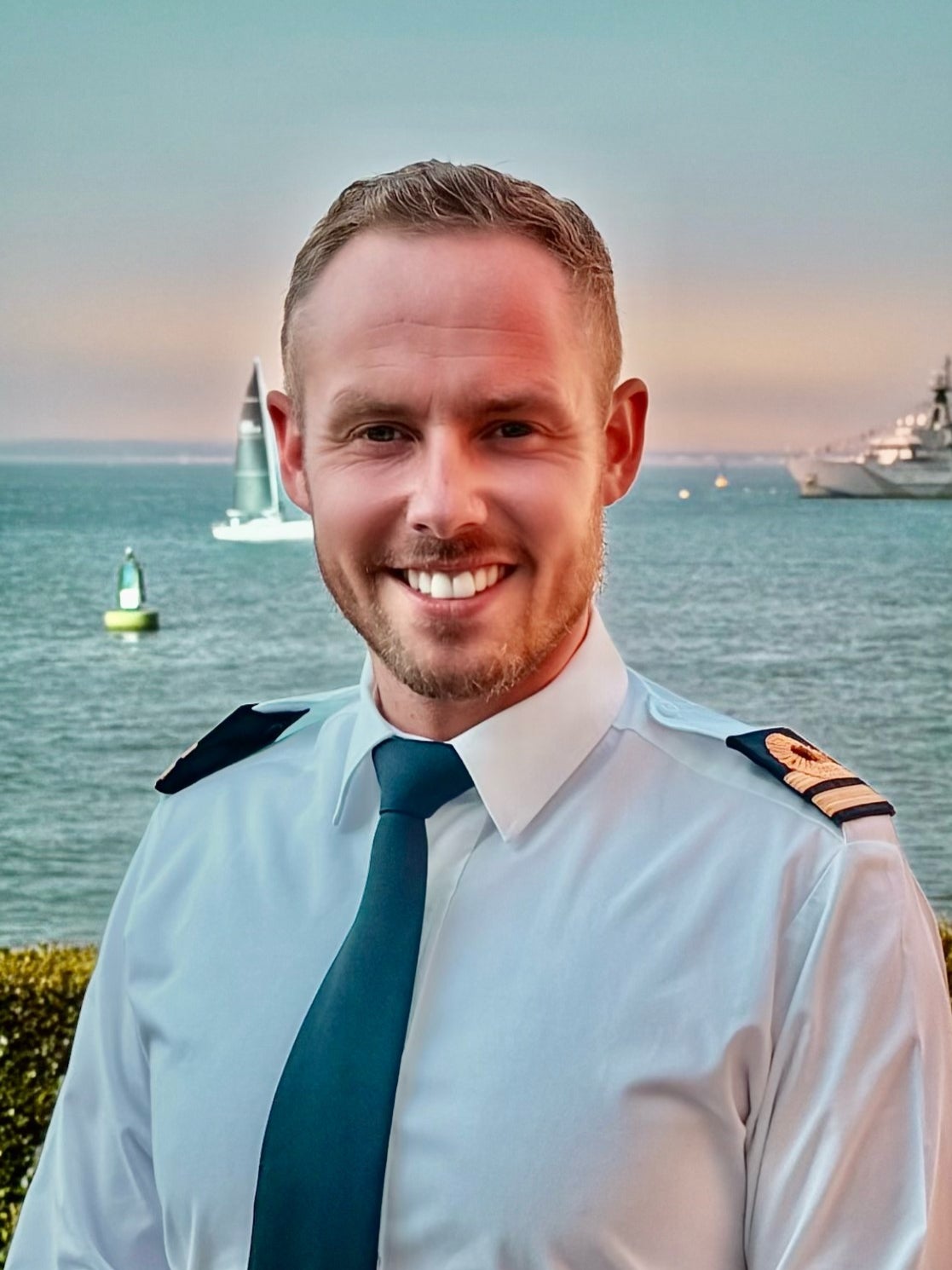Being gay meant being hated by the highest in the military command
Today marks 25 years since the ban on gay men and women serving in the UK armed forces was lifted. Those in the firing line recall the trauma that thousands experienced as – all too slowly – hearts and minds changed in the forces. Damian Kerlin reports

Craig Jones was a small-town Yorkshire lad with a single ambition – to join the Royal Navy, just as his uncle had done after the Second World War. After impressing the interview board, he earned a spot on an elite fast-tracking course and on 12 September 1989 he walked through the gates of Britannia Royal Naval College. He was on his way to a new life, doing something that would have made his uncle proud, but as he walked towards his dream future, he also says he did so “leaving a part of me behind”. Craig Jones was one of an estimated 5,000 people in the army who were breaking the law by being there because they were gay.
On 12 January 2000, a historic ruling by the European Court of Human Rights transformed the lives of LGBT+ individuals in the UK. By declaring the military’s ban on gay and lesbian service personnel unlawful, the court forced the British Armed Forces to lift a policy that had, for decades, institutionalised discrimination, secrecy and fear.
The ruling marked a turning point for LGBT+ rights in the UK and sparked a slow but significant cultural shift within one of the nation’s most rigid institutions.
For former lieutenant commander Craig Jones it would be life-changing. Reflecting on the era of secrecy, he describes the immense pressure it placed on LGBT+ personnel. “You had to be absolutely meticulous,” he says. “One mistake could destroy everything – your career, your reputation, your sense of self. The stress was constant.”
In 1995, a leaked letter from Admiral Sir Hugo White to First Sea Lord Sir Jock Slater revealed how hard the fight was going to be to get it overturned. Senior Royal Navy officials were already preparing a robust defence to maintain the ban on homosexuals serving in the armed forces.
Reported by The Independent, the letter emphasised the importance of timing and determination in upholding the existing policy. In it, White writes: “As in all battles timing is everything, and I know that chiefs of staff not only intend but are already vigorously defending the status quo and are determined to act in the most effective way at the optimum moment to do so”. He goes on to say that unlike other countries, the ban needed to remain place because “we have unique cultural traditions and tend to be sexually more conservative than many other countries”.
For Jones, whose sexuality had remained a secret until after the ban, the letter epitomised the entrenched homophobia that dominated military culture at the time. “It wasn’t just words,” he reflects. “It was how deeply ingrained the prejudice was, from the very top down to the mess deck. That kind of rhetoric wasn’t uncommon, it was almost expected.”
Jones explains that such public displays of hostility only intensified the pressure on LGBT+ service members to remain hidden. “Hearing something like that from a senior figure was crushing,” he says. “It reinforced this message that we didn’t belong, that who we were would always be a problem, no matter how good we were at our jobs.” A stark reminder of the constant vigilance required to protect his career and identity in an institution that officially viewed him as unfit to serve.

After returning to England in 1995, Jones met Adam, the man who would become his husband of 27 years, at a gay bar. At the time, being caught in a same-sex relationship and serving in the military could mean arrest and prison.
Jones, then serving as a navigator on HMS Sheffield, had to live a double life, hiding his sexuality and his relationship from those he worked with. At best, those who were discovered were dismissed from the army; at worst, they faced up to six months in military detention or prison and were left with a criminal record.
Constantly fearing exposure, he lived in paranoia, “de-gaying” his home, altering his address book, and dreading the military police. Jones recalls when a colleague came to visit, “I had a signed Shirley Bassey poster in the hall, and I thought: ‘Jesus, get that down.’ I had a picture of a warship somewhere, so I shoved that up on the wall instead. The whole environment was toxic. We had been hated by the highest levels of command.”
When Adam’s father died suddenly, Jones couldn’t leave the ship to support him, leading to a breakdown and 10 weeks’ leave. A career setback he blamed on a “crisis of confidence” to protect his secret.
The movement to overturn the ban gained momentum when Stonewall partnered with Rank Outsiders, a support group for LGBT+ service personnel, to challenge the policy at the European Court of Human Rights. Rank Outsiders was co-founded by Robert Ely and Elaine Chambers. Ely, a former warrant officer in the Parachute Regiment, was discharged after 17 years of service when his sexuality was revealed through a personal letter.

In 1999, the case was brought before the European Court in Strasbourg on behalf of Jeanette Smith, Graham Grady, Duncan Lustig-Prean and John Beckett, all dismissed from the armed forces solely due to their sexual orientation. The UK government argued that openly gay service members would harm morale and undermine operational effectiveness.
The court rejected this claim, highlighting the lack of evidence to support the alleged negative impact. The judges went further, declaring the ban unjustifiable and rooted in “predisposed bias” by a heterosexual majority against the homosexual minority.
Following the ruling, the Ministry of Defence revised its policy in 2000 to permit LGBT+ individuals to serve openly, marking a significant step forward some 33 years after homosexuality was decriminalised for civilians.
However, there was no big celebration, not publicly anyway. The ban was lifted, but the years immediately following the repeal were still challenging. While LGBT+ individuals could now serve openly, acceptance within the ranks did not come overnight. “I joined the Navy in 2001,” says Jamie*, a former submariner, who had been out since 1996, and although initially had hidden his identity, came out to “a few close colleagues”. “I should have known they [his colleagues] wouldn’t keep it to themselves.”
For those not seen as “one of the lads”, fitting in could be next to impossible. “There were still whispers, side-eyes, silence when I walked into a room”, he remembers, “moments that made you question if it was truly safe.”

Jamie recalls an incident during training when a fellow recruit directed a homophobic slur at him. The instructor let the comment hang in the air. “Acceptance might have been a policy, but it wasn’t yet practice,” he says. Speaking up wasn’t an option. “If I had complained, I’d have been marked as a troublemaker and made an even bigger target. The isolation could be brutal.”
Jones echoes this sentiment. “After the captain informed the ship’s company that the gay ban was to be lifted, I went to his office and said, ‘This is a day when, finally, our values match those we defend.’ He didn’t say much. There was definite disquiet when I said Adam would be my plus-one at the Navy’s Burns Night party a few days later.”
Did it propel anyone else to come out? “No!” Jones recalls, “the fact that the ops officer – me – had come out didn’t just spread around my ship. It went around the whole fleet. For the first four years after the ban was lifted, very few people came out and if they did, it was done quietly."
“Changing policy is one thing; changing hearts and minds is another,” he explains. “After the ban was lifted, there were still pockets of resistance. You had to work twice as hard to prove yourself.”
In the LGBT Veterans Independent Review published in July 2023, figures far exceeded the estimated 5,000 people. The review found that as many as 23,800 veterans who do not identify as straight or heterosexual, and 4,500 veterans who identify as trans, who served between 1967 and 2000.

The report collected 1,128 responses, of which 69 per cent reported being investigated, cautioned or warned due to their sexuality, with a further 30 per cent reported being subject to a medical examination or treatment.
One response recalled “sitting naked on what I can only describe as a dentist-type chair and the doctor showing me pictures of naked men/women and then measuring my penis to see if there was any reaction”. The report further went on to reveal the extent of the trauma of these incidents on those involved, with 99 per cent reporting negative health impacts, such as depression and anxiety, and a further 17 per cent of veterans detailing experiences of self-harm and suicide.
The accounts detailed in the report reveal the horrific breach of the Armed Forces Covenant, the nation’s promise that those prepared to stand in harm’s way to protect peace and freedom shall not be disadvantaged by their service. Instead, before the ban was repealed, thousands were expelled, their careers and lives shattered by a policy implemented more commonly with zeal than mercy.
On 19 January 2023, then prime minister Rishi Sunak stood in the House of Commons to deliver a long-overdue apology on behalf of the British state. “The ban on LGBT people serving in the British military prior to 2000 was an appalling failure of the British state, decades behind the law of this land,” he said. “In that period, many endured the most horrific sexual abuse and violence, homophobic bullying and harassment, all while bravely serving this country. Today, on behalf of the British state, I apologise.”

As the armed forces reflect on the past 25 years, current service members like Lieutenant Graeme McLaughlin highlight the progress made and the work still to be done. “For those of us who serve post-ban, we owe a debt of gratitude to those who fought hard to pave the way for us,” says McLaughlin, who has served openly in the Navy for three years.
Although there is not an exact number of gay people serving in the UK military, according to the 2021 Census, out of the total UK armed forces veteran population in England and Wales, just more than 0.9 per cent (16,650) of UK armed forces veterans identify as gay or lesbian.
For McLaughlin, the Navy has been a positive workplace. “I’ve been out the whole time and found it to be an inclusive and welcoming place to work,” he reflects. “We have LGBT staff networks that are vocal in initiatives, host events, and create spaces for people to share their lived experiences. It’s easier to identify others in the community and feel supported.”
Yet, not all his LGBT colleagues feel as secure. “There is still a perception of stigma, and I know not all my LGBT colleagues would want to be openly out or feel comfortable introducing their partners to colleagues,” he admits.
This anniversary is more than a milestone; it is a testament to resilience, a reminder of the sacrifices made, and a celebration of the progress achieved. As the armed forces continue to evolve, the stories of Jones, Jamie and countless others stand as a powerful legacy – a beacon for inclusion, courage, and unwavering determination – qualities that aren’t just admirable but the very essence of what makes a truly exceptional service member.
*name changed to protect identity


Join our commenting forum
Join thought-provoking conversations, follow other Independent readers and see their replies
Comments